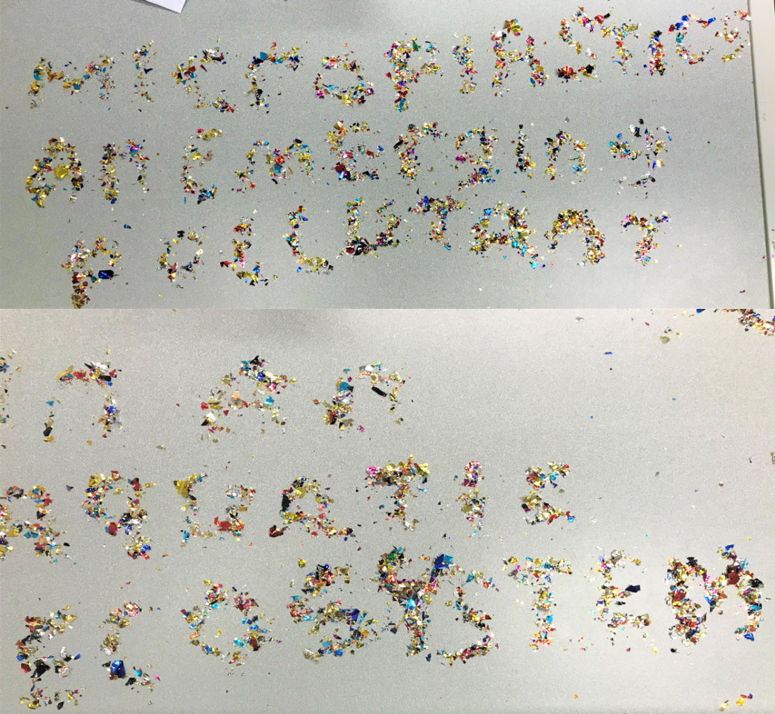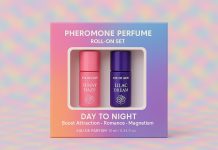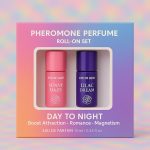As recent claims regarding the safety of adult toys state that many may contain microplastics and other damaging chemicals, it’s understandable that consumers may be picking up their regular masturbation practice with a bit more caution than they’re used to. (If you haven’t heard, and you’re reading this in a panic as your vibrator charges nearby, wondering if it’s OK to still jerk off the stress of the day, StorErotica explored the reports in a recent story, “You thought you were becoming a cyborg; you are actually a plastiglomerate,” with quotes from the source: “Bringing Sex Toys Out Of The Dark: Exploring Unmitigated Risks” published in the Microplastics and Nanoplastics journal, the study which first suggested that adult toys can break down into microplastics.)
In the scientific experiments conducted by Duke University, four different types of adult toys (anal toys, beads, dual vibrators and external vibrators) were shown to excrete nanoplastic fragments and release hormone-disrupting chemicals when mechanically rubbed and scraped. “What’s more, all these sex toys were found to contain phthalates; a group of widely used chemicals that can be detrimental to human health,” shares Science Alert. “At high enough concentrations, they are known to damage the liver, kidneys, lungs and even the reproductive system.”
The scientific evidence that “the potential toxicity of sex toys is not sufficiently understood, communicated or managed,” is no doubt concerning, but prominent sex educators and sexual wellness brands have responded diligently with their takes on the subject, and to let customers know that it’s OK to play.
“The potential toxicity of sex toys is not sufficiently understood, communicated or managed.”
– “Bringing Sex Toys Out Of The Dark: Exploring Unmitigated Risks” published in the Microplastics and Nanoplastics journal
Man’s World India points first to the fact that, while sex toys were the specific subject of the aforementioned study, the presence of microplastics is pretty much ubiquitous, according to a study published in Harvard Medicine, in products of all kinds – “from trash to fabrics, cosmetics to cleaners, and even seafood and table salt…microplastics have even been detected in the human body.” Man’s World India goes on to point out that, “It may be counterproductive if misreported pieces isolate sex toys and deem them as harmful.”

“Claims like [those of the Microplastics and Nanoplastics study] can certainly cause damage,” adds Dr Tanaya Narendra aka Dr Cuterus, an internationally-trained doctor, best-selling author and sex educator. Referring to the method of the study in question, she continues: “These products were sanded down mechanically, which means they were physically filed down to release these microplastics,” a measure of research which the doctor considers unrepresentative of normal use.
“From trash to fabrics, cosmetics to cleaners, and even seafood and table salt…microplastics have even been detected in the human body.”
– “Microplastics Everywhere,” published in Harvard Medicine
Leeza Mangaldas, a sexuality educator, best-selling author and founder of intimacy brand, Leezu’s, agrees. Without downplaying the concerning results of the study, she highlights how the sensationalist reportage perpetuates the stigma already associated with her business’s product category.

“People are interacting with plastics in many other ways far more frequently than with sex toys,” says Mangaldas, who is based in India. “We get hot chai in plastic bags, which we then drink out of plastic cups. We reuse disposable plastic drinking water bottles and take out containers that are designed for single use. A lot of these finds point at a much larger problem with plastics than merely sex toys.”
“The study clearly mentions this is not supposed to represent the entirety of the class of sex toys,” furthers Dr Cuterus. “Microplastics are everywhere and we consume them far more significantly in food and fashion than sex toys.”
However, Simran Balar Jain, sex educator and founder of Unbound, a wellness brand, expresses that the safety concerns must be addressed by sex toy brands, explicitly, and that it’s their responsibility to inform consumers of the full extent of contents (especially the inclusion of phthalates) of every item, as well as their possible effects. This is true for all product segments, but becomes critical in something as intimate and health-concerning as the sexual wellness segment.
“It’s an opportunity for the industry to focus on transparency, research and innovation,” she expounds. “If more conversations happen in the open, it will empower consumers to make informed choices.”
“It’s an opportunity for the industry to focus on transparency, research and innovation. If more conversations happen in the open, it will empower consumers to make informed choices.”
– Simran Balar Jain, sex educator
“I think it’s important for consumers to understand what they are buying,” adds Mangaldas. “Unfortunately, a lot of low-quality sex toys are made of plastic and PolyVinyl Chloride (PVC). However, there are several high-quality products that utilise non-porous body-safe materials like medical-grade silicone, surgical-grade steel and more.”
“Medical-grade silicone does not produce microplastic materials nor does it release harmful chemicals,” says Anushka Gupta, Founder of another Indian wellness brand. “We understand sexual wellness is an integral part of overall wellness. That’s why we are devoted to providing a range of products that not only enhance pleasure but also ensure peace of mind.”

Studies in the adult heath such as these are critical for the educated and ethical development of the industry, and questions from consumers play a role in that process; however, the unknowns ought not to be a cause for discontinuing the use of products additionally proven to have a wide array of health benefits.
“I think if we could remove the stigma around sex toys, both buyers and sellers would benefit,” concludes Mangaldas. “With greater ease of doing business and more openness around the category, there could be higher standards around quality control.”
Sources:
Harvard Medicine, “Microplastics Everywhere”














You must be logged in to post a comment.